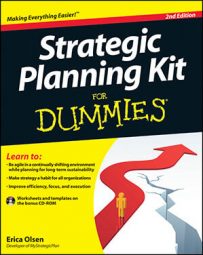Although implementation of a strategic plan may not be the most exciting topic to talk about, it’s a fundamental business practice that’s critical for any strategy to take hold. The strategic plan addresses the what and why of activities, but implementation addresses the who, where, when, and how. The fact is that both the plan and implementing the plan are critical to success. In fact, companies can gain competitive advantage through implementation if done effectively.
What follows is a list of lessons learned the hard way. It will help you discover how to get support for your complete implementation plan and how to avoid common mistakes. Because you want your plan to succeed, heed the advice here and stay away from the pitfalls of implementing your strategic plan.
Here are the most common reasons strategic plans fail:
Annual strategy: Strategy is discussed only at yearly weekend retreats.
Getting mired in the day-to-day: Owners and managers, consumed by daily operating problems, lose sight of long-term goals.
Lack of communication: The plan doesn’t get communicated to employees often enough.
Lack of empowerment: Although accountability may provide strong motivation for improving performance, employees must also have the authority, responsibility, and tools necessary to impact relevant measures. Otherwise, they may resist involvement and ownership.
Lack of ownership: The most common reason a plan fails is lack of ownership. If people don’t have a stake and responsibility in the plan, it’s business as usual for all but a frustrated few.
A meaningless plan: The vision, mission, and values statements are viewed as fluff and not supported by actions or don’t have employee buy-in.
No accountability: Accountability and high visibility help drive change, which means that each measure, objective, data source, and initiative must have an owner.
No progress report: No method is in place to track progress, and the plan only measures what’s easy, not what’s important. No one feels any forward momentum.
Not considering implementation: Implementation isn’t discussed in the strategic planning process. The planning document is seen as an end in itself.
Out of the ordinary: The plan is treated as something separate and removed from the management process.
An overwhelming plan: The goals and actions generated in the strategic planning session are too numerous because the team failed to make tough choices to eliminate non-critical actions. Employees don’t know where to begin.
Avoiding pitfalls is easier when they’re clearly identified. Now that you know what they are, you’re more likely to jump right over them.

